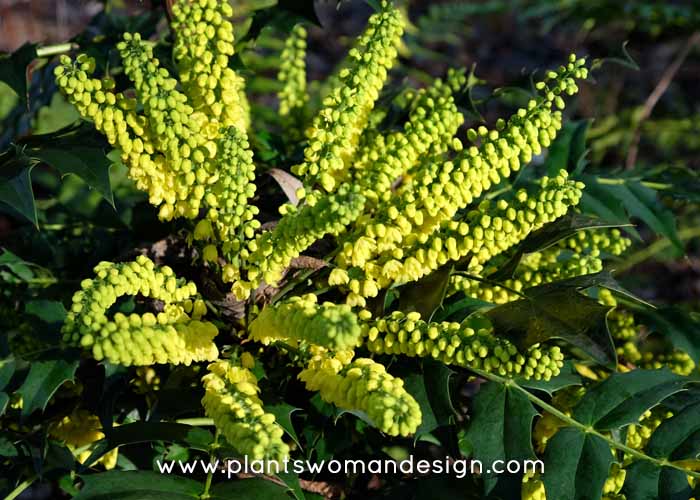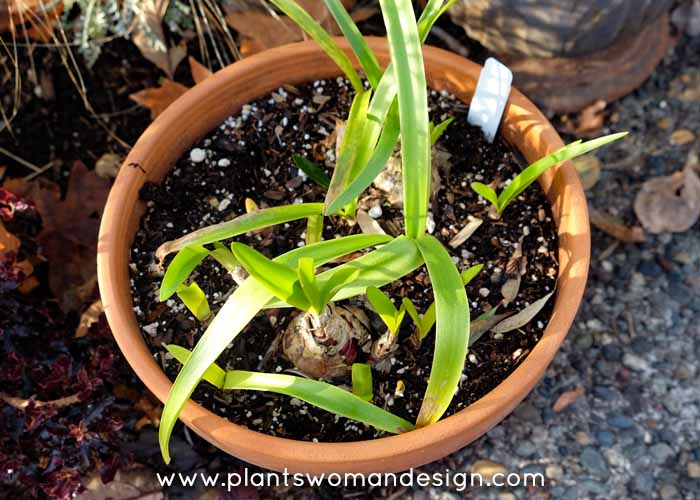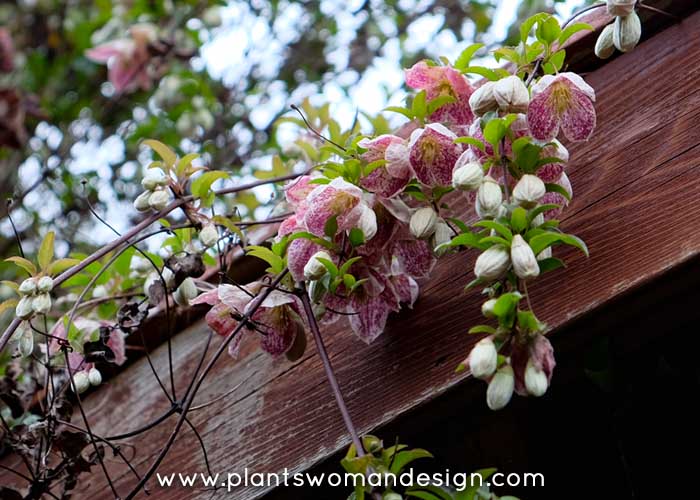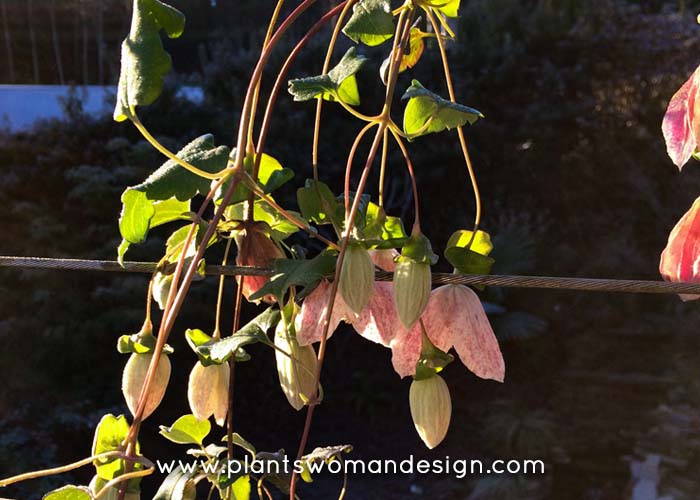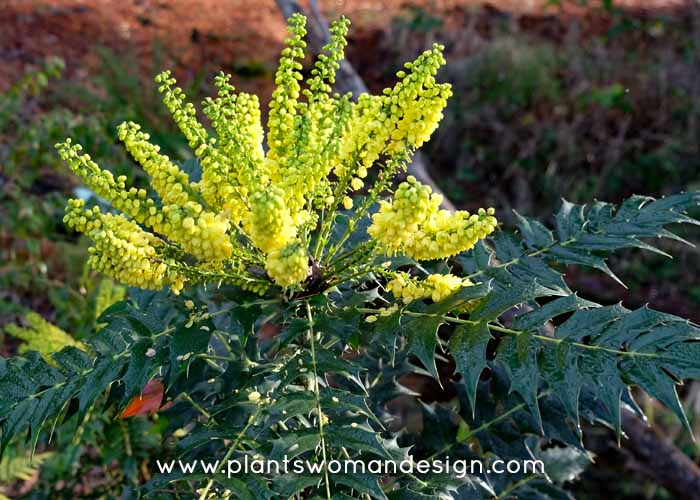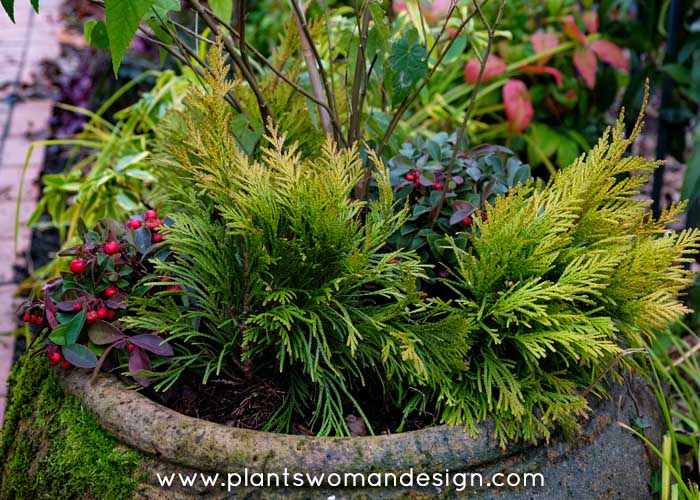
Christmas Cuttings 2 | Greens
Today we are going to finish the rest of the essential cuttings for your Christmas display. Some of these can be used inside with fresh roses or other cut flowers. They can also be used as wreath greens for outdoors. We are lucky to live in the Pacific Northwest where many of these evergreens are growing all around us. You may have some already growing on your property and can use these by pruning the branches carefully so as not to ruin their shape. There is another method that we jokingly call ‘civic pruning’. Roadside edges and vacant land around here contain Pine, cedar, fir and even mahonia. These natives are constantly reseeding themselves around. The road department is constantly shearing the edges, mangling the trees that encroach on the road. I simply help them along by clipping what is overhanging ditches and vacant land. Rules (my own admittedly) are, park safely, don’t get into traffic, and don’t go on private property.
For those less adventurous let’s grow some of our own.
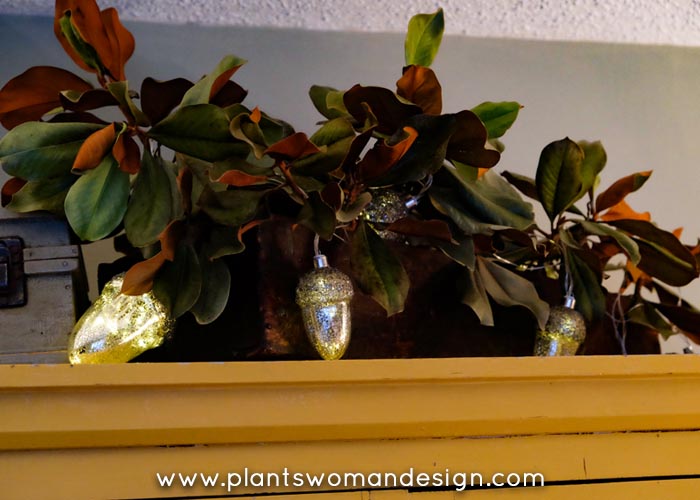
Magnolia grandiflora – One of the loveliest of all Christmas greens. My first Magnolia grandiflora had been damaged by a windstorm elsewhere and I rescued it by moving it to my house. It was sadly flat and misshapen so I didn’t feel too bad about harvesting the branches to make a lovely wreath. These are very expensive in the florist shops and even silk ones are very dear. Both this big variety and the smaller ‘Little Gem’ have great leaves and buds. Sometimes there are even seed pods left from the fall that are red with a bumpy texture. If you have the bigger ones you can prune them gently at any time during the year. Hardy to zone 7, Likes moist fertile soil with full sun. You might even plant a young one and keep pruning it just for the greens.
Hardy to zone 7, Likes moist fertile soil with full sun.
Pine – Both Shore Pine (Pinus Contorta) and Western White Pine (pinus monticola) are cut for Christmas greens. These both grow as natives in our state. They are easy to grow and work well in a larger garden. If you use them for greens cutting they are necessarily smaller. Hardy to zone 5 will take moist and dry soil but prefers acid soil. Full Sun is best. Sap can be a problem so it’s important not to plant them too close to driveways, patios or other sitting areas. These are good for adding to arrangements, or making wreaths.
Hardy to zone 5, acid soil, full sun

Mahonia is a beautiful shrub with berries to cut and bring in. Mahonia ‘Soft Caress’ has beautiful soft fingers of leaves. Sometimes the yellow flowers are present which adds more color to the mix. These are beautiful in arrangements, containers outside (plant then replant into the garden later), and garlands. Zone 7b, shade, looks best with protection from winds, can take some drought. Other mahonias are also good but this new one is a better twist on the native.
Zone 7b, shade, looks best with protection from winds, can take some drought.


Rosa Nutkana and rosa multiflora have great rose hips. Nutkana hips with their thorny branches are fantastic in wreaths. They can be woven into twiggy wreaths by themselves or added to wreaths, draped across the tops of wardrobes, cupboards, and cabinets. The hips harden and they have a lovely deep dark red color. These are very easy to grow and in some cases the rosa multiflora have been considered invasive. I think they are easy to control and make a good hedge for keeping animals out of a garden. Both easy to grow in average soil, better with moisture, full sun and hardy to zone 3. Roots are shallow and easy to pull out. Let them spread out for good arching stems with small roses in cluster.
Red Twig or Orange Twig dogwood (cornus ‘midwinter fire’, elegantissima) are amazing in many ways in Christmas decorations. They can be planted in containers outside, cuttings can be added to wreaths, garlands, and even in the Christmas tree to have spurts of color coming out of the tree. Easy to grow in many conditions, hardy to zone 3, full sun or shade, and easy to cut and keep cutting.Easy to grow in average soil, better with moisture, full sun and hardy to zone 3.
Easy to grow in many conditions, hardy to zone 3, full sun or shade.

Western Red Cedar, Thuja plicata, is our native cedar. This is probably the most used evergreen for decorating. Cedar garlands are for sale at grocery stores, home stores, and florist shops. Fragrant and tough (no needles falling) they are good for many areas in the home, wreaths, garlands, mantle pieces, banisters, and outside eaves and railings. Lights can be tucked in along the line to add interest at night. Easy to prune and take boughs from, can take a lot of foliage without noticing.
When planning your Christmas cutting garden choose an area of your garden that is a little out of the beaten path. Sometimes the cutting will be noticeable until the leaves and branches grow back in. Situate the plants closer than you would normally plant them. They will be cut back possibly yearly so they can stand to be close. Good siting for sun and shade can be determined by the path of the sun and planting to provide shade with taller things acting as shade. Enjoy your own cutting garden of Christmas Greens!Zone 3, wet or average soil, sun or shade with no real pests.

